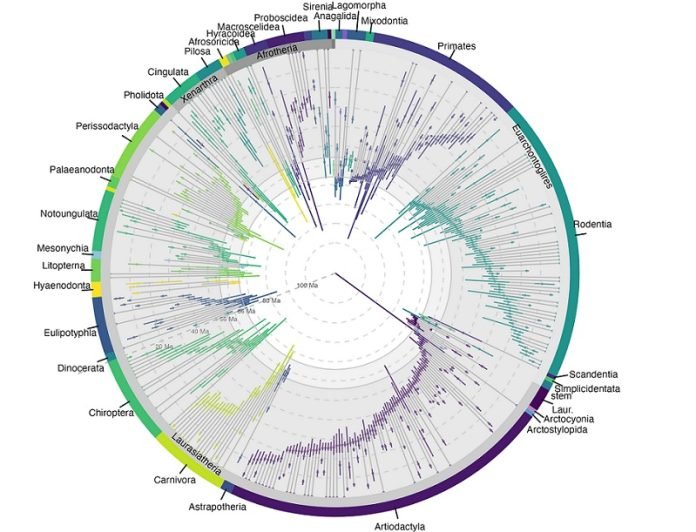
A group of researchers made a fascinating discovery, challenging what we thought we knew about the age of mammals.
They found that placental mammals, a group that includes humans, dogs, and bats, walked the Earth alongside dinosaurs, millions of years before an asteroid wiped out the giant reptiles.
Remember when we learned about the extinction of dinosaurs in the Cretaceous-Paleogene (K-Pg) mass extinction?
Well, it turns out some of our ancestors managed to survive that calamity. There’s been a long-standing debate among scientists about whether these mammals appeared during the dinosaur era or if they only showed up after.
When the team looked at fossils of placental mammals, they noticed these were usually found in rocks younger than 66 million years old – that’s when the asteroid impact happened.
This led many to think that placental mammals evolved only after the extinction event.
But, guess what? Molecular data – like the DNA stuff we talk about in bio class – hints that these mammals could be older than we initially thought.
In a new study, published in the scientific journal Current Biology, scientists from the University of Bristol and the University of Fribourg crunched the numbers and analyzed the fossil record.
Their findings? Placental mammals did exist before the big asteroid impact and co-existed with dinosaurs for a bit. The exciting part?
After the asteroid impact, modern types of placental mammals started to evolve, suggesting they had a better chance to diversify once the dinosaurs were out of the picture.
The team gathered loads of fossil data from different groups of placental mammals dating back to the time of the mass extinction 66 million years ago.
Emily Carlisle, the lead author from Bristol’s School of Earth Sciences, said they managed to put together thousands of fossils and analyze the patterns of how these groups of mammals began and ended. This helped them estimate when the evolution of placental mammals happened.
One of the study’s co-authors, Daniele Silvestro from the University of Fribourg, explained the methods they used to estimate the ages of these early mammals based on when they first appeared in the fossil record and how species diversity changed over time. They also used these methods to estimate when the groups became extinct.
Another co-author, Professor Phil Donoghue from Bristol, said by looking at both the beginning and the end of these mammal groups, we could better understand the impact of significant events like the K-Pg mass extinction.
The most remarkable part of the study showed that primates, which include the human lineage, along with rabbits, hares, dogs, and cats, evolved just before the K-Pg mass extinction. This means that the ancestors of these animals lived alongside the dinosaurs.
After the asteroid impact, these mammals survived and began to diversify quickly, probably because they didn’t have to compete with the dinosaurs anymore.
In short, our ancient relatives were more of a tough cookie than we gave them credit for! They not only survived the asteroid impact but took the opportunity to evolve and thrive after the dinosaurs’ departure. Talk about resilience!



